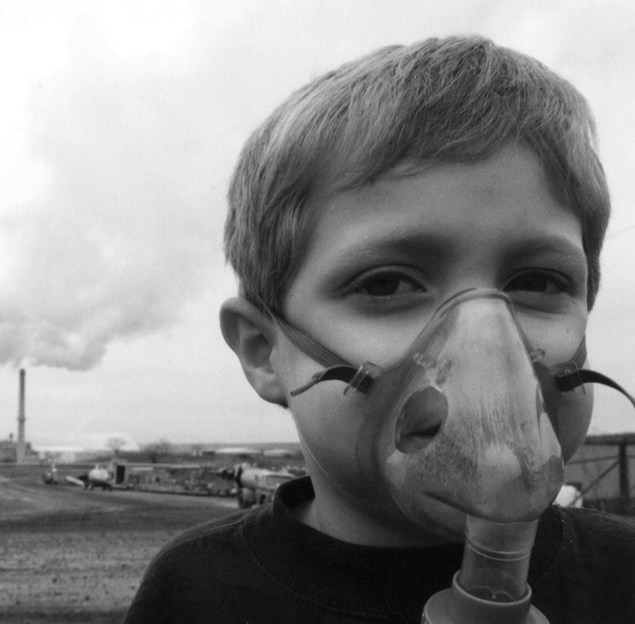After a 14-year Campaign, State-of-the-Art Pollution Control Finally Coming to Midlothian
 (Midlothian) After a 14-year effort by local citizens, Holcim US Inc. is applying for a permit to the Texas Commission on Environmental Quality to install a Selective Catalytic Reduction (SCR) unit in their Midlothian facility. It's the first application for commercial use of SCR technology in any U.S. cement kiln.
(Midlothian) After a 14-year effort by local citizens, Holcim US Inc. is applying for a permit to the Texas Commission on Environmental Quality to install a Selective Catalytic Reduction (SCR) unit in their Midlothian facility. It's the first application for commercial use of SCR technology in any U.S. cement kiln.
DFW-based clean air group Downwinders at Risk has been advocating the use of SCR in the three Midlothian cement plants located just south of I-20 since 2000, when a German cement kiln first operated the technology successfully.
Together, the TXI, Ash Grove, and Holcim plants represent the largest concentration of cement manufacturing in the country and are a major contributor to DFW's historic smog problem.
"We need this pollution control technology in North Texas, and we're pleased to see Holcim's application," said Downwinders Director Jim Schermbeck. "But we wish residents could enjoy its results sooner than Holcim intends."
The SCR unit is planned for Holcim's idle Kiln #2 while a more common Regenerative Thermal Oxidizer will be built for its operating Kiln #1. Both technologies are being installed to meet new EPA emission standards for hydrocarbon pollution from cement plants. Those standards themselves were championed by Downwinders and other citizen groups in 2009, with over 200 people showing up at an EPA hearing the the DFW Airport Hotel to support them.
The deadline for compliance with the new standards is September 2016. However, restarting of Kiln #2, and the introduction of SCR in Midlothian, is dependent on local demand for Holcim's cement, which is still recovering from weak demand during the recession. That lack of demand could delay the technology's inauguration until after 2016.
Nevertheless, according to Schermbeck, Holcim's application for a permit to install SCR makes it's more likely that all of the Midlothian cement plants, and others in EPA "non-attainment areas" for smog pollution around the country, will be adopting it sooner rather than later.
"Holcim's application sets a precedent that's hard to ignore by regulators in Austin and Washington. For the first time a US cement plant has expressed enough confidence in SCR to make it a technically and economically-viable choice for pollution control. There's no going back."
SCR is widely considered to be the most advanced form of pollution control for cement manufacturing, capable of reducing smog-forming pollution by 90% or more, along with significant reductions in Particulate Matter, metals, and Dioxins.
Although about half a dozen European cement kilns are successfully operating the technology, U.S. plants have refused to endorse it. Two EPA-sponsored pilot tests of SCR are being conducted at Indiana and Illinois cement kilns as part of court-ordered settlements. Holcim's application for its Midlothian kiln is the first time and American cement plant is voluntarily approving SCR use.
Although it's not coming in time to impact the current DFW clean air plan, due to go to public hearing in January of next year, Holcim's application will put SCR on the agenda for the next such plan.
Just two weeks ago, EPA staff recommended a new ozone, or smog, standard of between 60 and 70 parts per billion over an eight hour period versus the current limit of 75 ppb. Adoption of a stricter standard is expected to occur by late next year, meaning a plan to meet that standard will be gearing up sometime in the next three to five years. By that time, Holcim's SCR unit should have a track record that can be cited as a reason for all the Midlothian cement plants to use it.
Schermbeck noted that just last month representatives of the TCEQ told a regional air quality meeting in Arlington that SCR was neither an economical nor technically feasible pollution control option for the Midlothian cement plants. He said Holcim's application belies that claim.
A public meeting on the Holcim permit application is being scheduled for early November.
Arrival of SCR on the scene marks the latest and the most dramatic milestone in the transformation of the local cement industry since Downwinders at Risk was founded 20 years ago to stop the burning of hazardous wastes in the Midlothian kilns.
After a 14-year battle, TXI halted its hazardous waste-burning operations in 2008. Downwinders then pursued a six-year "green cement" campaign to replace all seven obsolete and dirtier wet kilns with newer "dry kiln" technology. That campaign ended in 2012 with the announcement that Ash Grove would shutter its three wet kilns and build a new dry kiln in their place. That plant is due to go on line this year.
Adoption of SCR remained a goal of the group through four different DFW clean air plans going all the way back to 2000. Schermbeck said his group made incremental progress each time, winning small and large battles that directly lead to today's news.
"Holcim's application for SCR is the latest testament to the persistence and focus of a small group of committed citizens who have pulled and pushed the U.S. cement industry into the 21st Century one step at a time."
Positively, Absolutely, Final Last Chance to Get a Discount on Earth, Wind, and Fire Energy Conference
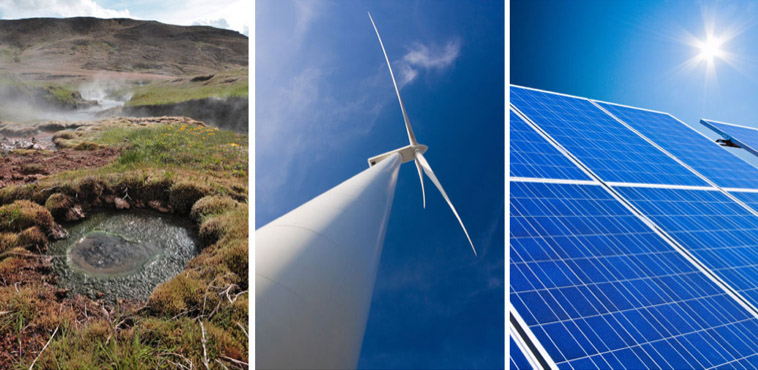 Organizers are giving you until tomorrow, September 12th to early register for the largest citizen-organized energy conference DFW has ever hosted, the Sierra Club's Earth, Wind and Fire Energy Summit scheduled for October the 4th and 5th. Topics cover the spectrum, from wind and solar to fracking and waste-to-energy boondoogles. At- the-door registration is $25 more than the $55 you pay by signing up now, so save yourself some money.
Organizers are giving you until tomorrow, September 12th to early register for the largest citizen-organized energy conference DFW has ever hosted, the Sierra Club's Earth, Wind and Fire Energy Summit scheduled for October the 4th and 5th. Topics cover the spectrum, from wind and solar to fracking and waste-to-energy boondoogles. At- the-door registration is $25 more than the $55 you pay by signing up now, so save yourself some money.
McCarthyism in the Gas Field: Second RRC Commissioner Says Russia to Blame for Fracking Opposition
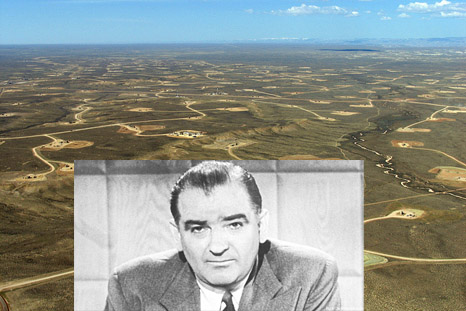 A second member of the Texas Railroad Commission has accused US fracking opponents of being financed by Russian gas interests. That makes two out of three. Your immediate reaction may be: "Oh yeah, Where's my check?" But Davis Porter is serious, and in making the charge, Porter is walking a fine line in seriously slandering Josh Fox and others with his reckless accusation, which has everything it needs except, you know, proof.
A second member of the Texas Railroad Commission has accused US fracking opponents of being financed by Russian gas interests. That makes two out of three. Your immediate reaction may be: "Oh yeah, Where's my check?" But Davis Porter is serious, and in making the charge, Porter is walking a fine line in seriously slandering Josh Fox and others with his reckless accusation, which has everything it needs except, you know, proof.
Porter made the claim in a snappy press release entitled “Porter Exposes Putin Plot to Hurt Texas Economy,” that jumps from the fact that the Russian gas giant Gazprom has hired a US public relations company to try and soften the impacts of sanctions over the Ukraine crisis into a dark and secret conspiracy to promote home grown fracking opposition. Believing this story would first require the laughable leap of faith that the PR firm's go-to Gazprom lobbyists, former GOP Senate hardliner Trent Lott (R- Mississippi) and Blue Dog Democrat John Breaux (D – Louisiana), are turning their backs on big business in their own states and hanging out with the cast of Gasland. Not bloody likely.
But that's not stopping Porter. In his press release he says the Russians are using the PR partnership not to get out from under pressing US sanctions for their illegal invasion of another country, but "to spread unsupported propaganda about the environmental and health risks of the practice of fracking."
Citing a dire warning he's already sent via a very serious letter to Secretary of State John Kerry, Porter reveals that Moscow's "apparent strategy includes funding anti-hydraulic fracturing environmental organizations, placing misinformation in the public, and even mass media propaganda — namely their assistance with the distribution of Gasland, an incredibly deceitful film about hydraulic fracturing in America."
Porter uses wire reports about the PR firm's hiring to make explicit what RRC Commissioner Barry Smitherman only artfully hinted at in his letter to the marathon Denton City Council meeting in July over the debate on a fracking ban in that city – that US anti-fracking activists are being financed by the Russkies.
There's only one problem, none of the news reports about the hiring of the PR firm has mentioned fracking, even in passing. Even in footnotes.
To make that strained connection, Porter relies on an undated piece by one Keith C Smith who was with a think tank outfit called the Center for Strategic and International Studies. Smith cites nefarious Russian influence in Bulgaria's decision to ban fracking and German business ties to Russian gas to suggest that there's a master plan to leave Russia as the sole provider of natural gas to Europe and freeze out US imports.
Will you be at all surprised to learn that Mr. Smith has been "a consultant to several energy companies?"
To its credit, the Texas Tribune, which broke the story, asked Porter for specific examples showing Gazprom was funding anti-fracking efforts in America. Porter’s spokeswoman Mary Bell said in an email: There are multiple news reports citing Gazprom's influence and efforts in the EU and the US. Some are linked in the letter.” She means the Smith article, which shows absolutely no influence on US anti-fracking activities, and the news reports about the recent hiring of the PR firm to help the Russians avoid sanctions, but mentions nothing about fracking.
See how that works? First, we have a piece by an energy company consultant that says he strongly suspects Russian influence in the Bulgarian fracking ban, but can't prove it. Next, Gazprom hires a PR firm to avoid the repercussions of sanctions over the Ukraine invasion. Ergo, Russia's "influence and efforts in the EU and US" are plain as day.
When he was asked by the Tribune as to Russian influence in Denton's fracking vote, Porter spokeswoman Bell said that “the commissioner's comments are not specific to Denton,” but “Gazprom is spending tens of millions of dollars — that we know of — to eliminate competition globally. It's likely they've influenced much of the anti-hydraulic fracturing movement's message.”
Students of history know this is exactly how McCarthyism works – by innuendo instead of fact. Indeed, the Wikipedia definition of McCarthyism is "the practice of making accusations of disloyalty, subversion, or treason without proper regard for evidence." It also means "the practice of making unfair allegations or using unfair investigative techniques, especially in order to restrict dissent or political criticism."
Commissioner, have you no sense of decency, sir? At long last, have you left no sense of decency?
Feds: Fracking Site Tests Show 15 of 17 Employees Exceeded Benzene Exposure Limits
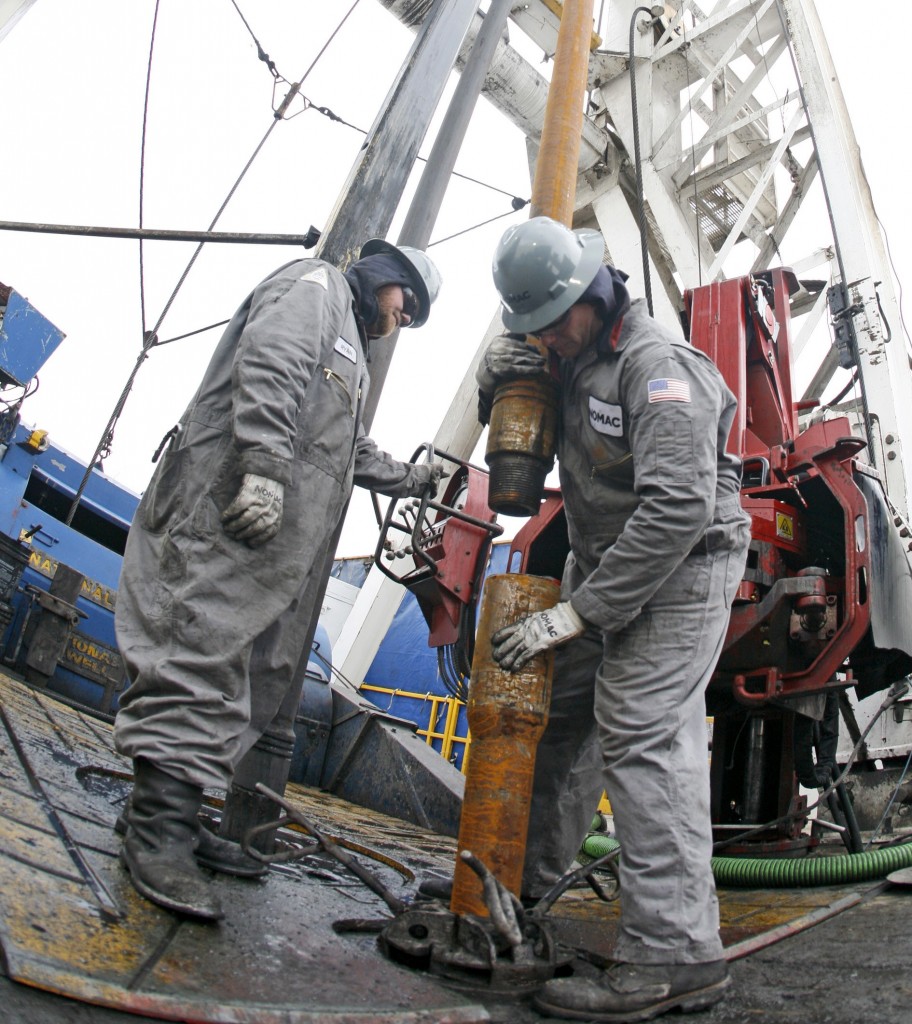 On Labor Day we wrote about the fact that workers employed by polluters are often as much at risk from exposure to the polluters' poisons as near-by homeowners. A new peer-reviewed study of six fracking sites in Colorado and Wyoming published by the National Institute of Occupational Heath and Safety (NIOSH) is fresh proof of this, showing 15 of 17 tests for Benzene exposure among workers who were monitoring on-site fracking well "flowback" exceeded the federal eight-hour exposure limit.
On Labor Day we wrote about the fact that workers employed by polluters are often as much at risk from exposure to the polluters' poisons as near-by homeowners. A new peer-reviewed study of six fracking sites in Colorado and Wyoming published by the National Institute of Occupational Heath and Safety (NIOSH) is fresh proof of this, showing 15 of 17 tests for Benzene exposure among workers who were monitoring on-site fracking well "flowback" exceeded the federal eight-hour exposure limit.
The study looked at drill site workers who use a gauge to measure the amount of "flowback" water that returns after a frack job is initiated. Flowback is the regurgitation of the fracking fluids from the well itself. It's collected on the surface after hydraulic fracturing is completed.
Benzene is a known carcinogen that's routinely present in fracking flowback water. It’s the same poison found in gasoline, cigarette smoke and a lot of chemical manufacturing and refining. It's been directly linked or associated with leukemia and other conditions, such as Acute Myelogenous Leukemia (AML), Chronic Myelogenous Leukemia (CML), Acute Lymphocytic Leukemia (ALL), Chronic Lymphocytic Leukemia (CLL), Hairy Cell Leukemia (HCL), Non-Hodgkin’s Lymphoma, Multiple Myeloma, Myelodysplastic Syndrome (MDL), Myelofibrosis and Myeloid Metaplasia, Aplastic Anemia and Thrombocytopenic Purpura.
How Davids Beat Goliaths: Tenacity, Opportunism and, Yes, Money…
 In a 2009 magazine essay that's become a standard hand-out of ours, author Malcolm Gladwell examines everything from a full-court press in girl's basketball to the military tactics used by Lawrence of Arabia in identifying the qualities that make successful underdogs.
In a 2009 magazine essay that's become a standard hand-out of ours, author Malcolm Gladwell examines everything from a full-court press in girl's basketball to the military tactics used by Lawrence of Arabia in identifying the qualities that make successful underdogs.
They don't play by their opponents' rules.
They're opportunistic.
They're relentless.
Time and again, he finds that determination trumps everything else.
Downwinders at Risk is one of the best examples of this formula.
There are larger environmental groups. There are groups with more expertise. But you'd be hard-pressed to find a more determined group than Downwinders at Risk. Why? Focus and persistence.
Focus, because we concentrate on local air pollution issues and nothing else.
Persistence, because we never give up, even if it takes years to win the fight.
Despite a hostile Governor, unfriendly state agencies, and industry opposition, Downwinders has won huge, unprecedented victories for cleaner air in North Texas using not much else than its own sweat equity and the organized energy of local DFW residents like yourself.
But even the most determined insurgents need money.
Once a year in September, Dallas-based Communities Foundation of Texas hosts a regional "Giving Day" for all DFW non-profits, when online donations of $25 or more can be matched or multiplied by the Foundation itself or other donors. Your online contribution actually helps us grow more money for the cause.
This year's Giving Day is Thursday, September 18th, 6 am to 12 Midnight.
Downwinders is using this 2014 Giving Day to try and raise $7500 – enough to pay for staff work for three months.
That's couch change to most groups, but it's 90 days of determined and focused work for us – and your lungs.
How you can help:
On September 18th, just go online to northtexasgivingday.org click the "Environment" category on the right hand side of the page and find our familiar child and inhaler logo:
Click on it and donate $25 or more.
That's all there is to it. It's easy and it'll make a huge difference to us. You can follow our progress on the 18th on our FaceBook page.
Why you should help:
We're organizing resistance to another state "do-nothing" clean air plan that will continue to keep DFW the "Dirty Air Capitol of Texas."
We're pressing for the Midlothian cement plants to install state-of-the art pollution controls that are already in place in Europe.
We're making fracking a regional air quality issue, fighting to bring new studies and controls to the attention of the media and officials.
We're exporting the new, citizen-driven and more protective "Dallas Model" to replace the obsolete, industry-based Fort Worth Model" of gas drilling regulations.
We're speaking out against the City of Frisco's plan to leave 50 years of Exide lead smelter waste in the middle of town rather than hauling it off to a proper hazardous waste disposal site.
Thanks for your support and consideration.
Labor Day 2014: Why Texas Environmentalists Should Be Pro-Union
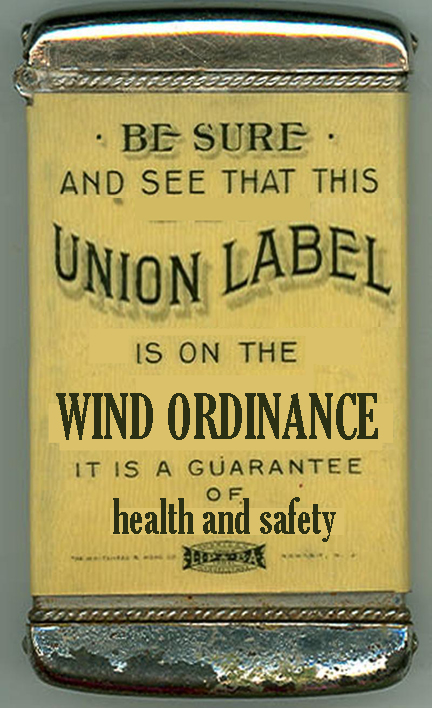 There's one population of victims of industrial pollution that often has it even worse than those who live downwind: those that work within.
There's one population of victims of industrial pollution that often has it even worse than those who live downwind: those that work within.
Groups like ours make it their business to represent the interests of "frontline" residents who live adjacent to, or in close proximity of, places that routinely release crap in the air that affects their health and well-being. Collective action is promoted as a way to address that situation and, in our experience, it works more often than not. At its essence then, Downwinders is a kind of union of pollution victims.
Local residents who decide to step out of line and speak out against the facility's pollution are often ridiculed, threatened, and ostracized. Especially in small towns where the facility is among the largest employers or taxpayers. Because of the interconnections and economic ripple effect of such facilities, some activists get warned about losing their jobs even though they may not work for the offending company itself.
Imagine then the pressure on workers inside the facility whose very livelihood rests on their silent consent. Despite a constant stream of studies showing exposure levels for employees of polluters at many times the levels of those outside company property, they have no collective means to help them relieve their condition. Except for unions. Which means in Texas, they usually don't have any recourse at all.
Lack of union representation for these workers not only diminishes their job security, it means they're much less likely to be willing or able to help those outside the fence line who are also being shat-on. They're on their own, with no organizational backing. They have no access to collective action. In many ways they're less powerful and have fewer options than those getting doused in their own homes across the street from the company. Sometimes they ARE the people in those homes and get it coming and going.
When there's no union, there's much less chance of any kind of meaningful dialog between activists and workers, even though they may share the same concerns and be affected by the same pollution. There's one less ally for activists to recruit in seeking more effective pollution controls or cleaning-up a site. The flow of information about what's really going on inside the facility is circumscribed. Industrial polluters stand a better chance of holding out against change if they can keep those on either side of the fence line from joining forces.
On the other hand, some of the most effective pollution control measures among Texas Gulf Coast refineries and chemical plants are the result of strong unions with the ability to collectively bargain for change. In countries with a longer and stronger union movement, it's the "Labor Party" that usually voices the loudest support for environmental progress.
Unions aren't perfect. They can become as bloated and neglectful as any corporation. They can stifle progress by parroting the wrong-headed notion that less pollution means less jobs. But they're the only counterweight to corporate power within the facility because they can affect the bottom line with a slow down or strike – more potential power than activists often have after years of organizing. If you're an environmental activist, it's in your own self-interest to promote unions.
Likewise, if you're a union representing workers who are getting poisoned, it's in your own self interests to put pressure on the company or industry to clean-up its act by working with environmentalists who can exert their own kind of pressure for action.
That recognition of mutual self-interest is the driving force behind such efforts at the Blue-Green Alliance that merges unions like the Steelworkers, UAW, CWA, and SEIU with the Sierra Club, Natural Resources Defense Council, and, appropriately enough, the Union of Concerned Scientists, into a broader coalition working for climate change action. By working together, they can anticipate and head-off the sudden jerks of unemployment that would happen as we transition off of fossil fuels to a greener economy.
Imagine how much fertile ground could be plowed in discussions between the grunts at drilling sites and the people who live next door if there was a union of such workers that was as concerned about the health of their members as residents were about the health of their children.
There's a long proud history of unions lending their power to social causes beyond the factory gates. Many were important in bringing the civil rights movement out of the South and making it a nationwide litmus test for elected officials. But that was when there was still a strong labor movement in the US; when the president of the UAW or Mineworkers Union were regular White House visitors, no matter which party was in power.
In Texas, a "right to work" state, unions often have the stigma of Leper colonies. They're used as political fodder for Republican candidates swearing they're the first step toward socialism, while being held as arm's length by Democrats for fear of being tainted with a "pro-union" label. Texas environmentalists are in a position to demand better.
Thirty years ago the observation was made that a conservative was just a liberal who'd been mugged. These days in Texas, thanks to fracking, an environmentalist is often as not a conservative who's been gassed. Many of those most affected by the oil and gas industry in North Texas and elsewhere are "dittohead" true believers, but also feel portrayed by officials who have traded their conservative credentials for campaign donations.
After a certain amount of abuse it's not hard for these right wingers to realize that they must organize themselves into collective action on behalf of their communities if they want to keep from being completely run over by companies that don't give a damn. Is it really that far a leap in logic to believe the same principle is true for workers who feel just as disposable to the same company?
Those that come to environmentalism through their own liberal values must reach out and make unions a part of the natural landscape. Just as Greens need to adapt by becoming more racially and economically diverse, so we must become more insistent that unions are an integral part of the change we're seeking. They can make our job a lot easier.
Maryland: Toxic Air Pollution Top Threat From Fracking
 According to a state-sponsored study through the University of Maryland's School of Public Health, "air emissions trump water pollution and drilling-induced earthquakes as a top public health threat posed by future fracking projects in Maryland."
According to a state-sponsored study through the University of Maryland's School of Public Health, "air emissions trump water pollution and drilling-induced earthquakes as a top public health threat posed by future fracking projects in Maryland."
For the better part of a year, faculty surveyed previous research between the gas industry and health effects. They looked at all the possible "exposure pathways" for toxins to reach surrounding populations from gas rigs and facilities and ranked each of the threats. Air quality got a "high" threat ranking, whereas water pollution ranked "moderately high" threat and earthquakes "low."
Dr. Donald Milton, Director of the Maryland Institute for Applied Environmental Health and a UMD professor of epidemiology, biostatistics, and medicine was the study's lead investigator and concluded,
"….existing data show a clear trend: oil and gas activity can spew significant levels of toxic chemicals into the air—and that pollution consistently makes people sick.
"We think [the state] should pay a lot of attention to air pollution," said Milton. Although water pollution is also a concern, Milton told InsideClimate News that there's not enough data on how likely dirty water is to sicken people, nor how strong those health effects would be."
Because most of the reviewed data in the study comes from gas plays that have received a lot of attention over the last couple of years – the Barnett and Eagle Ford in Texas, the Marcellus in Pennsylvania, and the Bakken in North Dakota – Maryland's environmental and public health officials were quick to offer a joint damning disclaimer: "We believe it is important to note that it is largely based on information on natural gas development in areas where the pace of gas development was rapid and intense and without stringent regulations and government oversight." Well yeah, but if our own officials weren't so negligent you wouldn't have the benefit of now learning from our bad examples.
The study was part of a 2011 executive order signed by Maryland Governor Martin O'Malley that outlined a state approach to dealing with potential fracking in the state's western corner, where the Marcellus extends across the Pennsylvania line.
Besides identifying air pollution exposure as a major threat, the study also offered specific recommendations to combat that exposure, including:
– a 2000-foot setback from urban neighborhoods (Dallas and Southlake both have 1500-foot setback provisions)
– baseline air quality monitoring before any drilling or production begins
– constant air monitoring when activity on the site begins
– transparency in the information about the facility.
As the Inside Climate article on the study notes, its conclusions "stand in stark contrast to public concern in heavy-drilling states such as Maryland's neighbor Pennsylvania. Those concerns have tended to focus on tainted water, not air."
Indeed. It's a lot easier to make a fire-breathing water hose into a drive-by YouTube meme than a family gasping for air that won't make them sick. But for most neighbors of urban gas drilling, water quality isn't even on the radar screen because they're getting their H2O from a city pipe running from a lake, not a well. On the other hand, they're directly breathing in the mix of chemicals and pollution coming off the site itself, making their home a frontline toxic hot spot. That site's plume is then combining with hundreds or even thousands of other plumes from similar sites close-by to decrease regional air quality. That air pollution can end-up affecting thousands or millions of residents who don't even live in close proximity to a rig or compressor.
In the most successful "nuisance" court cases against gas operators in the Barnett Shale over the last year or so, air pollution has been the villain keeping families from enjoying their property and running up their medical bills. You can get water trucked in, but it's very hard to do the same with air.
Public comment on the report is open until October 3rd.
New Report Tells Us What We Already Know: The Green Movement is Too White
 There's an old joke that the best place to find black or brown people in the environmental movement is in grant proposals. Every group uses the well-known and terrible demographic facts of environmental justice to justify their own programming, but almost none of that programming directly involves the subject of those terrible demographics.
There's an old joke that the best place to find black or brown people in the environmental movement is in grant proposals. Every group uses the well-known and terrible demographic facts of environmental justice to justify their own programming, but almost none of that programming directly involves the subject of those terrible demographics.
It didn't get much press, but a new University of Michigan study of a broad array of organizations doing environmental work showed that while black and brown citizens represent nearly 40 percent of Americans, they account for fewer than 16 percent of the employees in those organizations – and that's counting state and federal agencies. Private groups and foundations fare even worse – only 12% of their numbers are people of color. On any given day, the Ferguson Missouri police department and your local environmental group look about the same.
According to the study's author, Dorceta Taylor, a professor in the School of Natural Resources and Environment at the University of Michigan "an 'unconscious bias' exists within the liberal and progressive culture of the groups, preserving a racially homogenous workplace. Recruitment for new staff frequently occurs through word-of-mouth and informal networks. This makes it difficult for ethnic minorities, the working class, or anyone outside of traditional environmental networks to find out about job openings and apply for those jobs.”
In its coverage, the Washington Post, says the report shows the existence of "…two environmental movements. One is white and the other non-white, one rich and the other poor, one devoted largely to advocating on behalf of wilderness areas and the other for “environmental justice” in core urban areas where minorities tend to live." That divide is far more prevalent among the larger, well financed groups that can afford to even hire staff than it is at the grassroots level where all groups struggle and there's less emphasis on wilderness issues. Nevertheless, the divide is there and it's making environmentalism a political side show instead of a a major stage event.
Most of the time, people are motivated by self-interest. When a huge and growing segment of the country's population doesn't see a self-interest in having safe water and air or open spaces, these things become less and less important to a national agenda. And yet, those demographic facts don't lie. Black and brown asthma rates are far above whites. Most polluting industries locate in places that can't fight back. Just as there's a huge imbalance at the top in terms of leadership, so there's also a huge imbalance of who's at risk on the bottom rungs. People of color ignore the environmental agenda at their own risk. But environmental groups that ignore people of color do so at their own risk as well. In another generation, they'll be as relevant as Civil War re-enactors.
We all have to do a better job of connecting the dots, Downwinders included. Right now, we have exactly one person of color on our board and none on staff. Good intentions matter, but they don't matter enough to be used as excuses. Those of us doing the front line work must find the time to widen our ranks or we'll find ourselves without ranks at all.
TCEQ: Link Between Fracking and Air Quality, No Cement Controls Just “Because”: Highlights From Tuesday’s Air Meeting
 Dallas Resident Liz Alexander showed up at the Council of Governments meeting room on Tuesday to lend her support to the effort to get more out of an anemic state ant-smog plan than the state wants to give. She was a warm body whose presence would be its own statement of concern. She was being a good trooper by just showing up.
Dallas Resident Liz Alexander showed up at the Council of Governments meeting room on Tuesday to lend her support to the effort to get more out of an anemic state ant-smog plan than the state wants to give. She was a warm body whose presence would be its own statement of concern. She was being a good trooper by just showing up.
At first she sat far from the action amidst the rows of seats for bystanders and, despite encouragement, was resigned to just listening, because as she explained, "she didn't know enough to ask questions."
Then someone urged her to move up to the rectangle of tables where the presenters stand and deliver, where there are microphones to raise the volume of concerns and questions that might be posed by mind-numbing reassurances that everything is going hunky-dory. As more of these air quality meetings have occurred, citizens have been less and less shy about taking up these front row seats that look more official than the rest; look like they should be reserved for guys in suits. Increasingly they're occupied by people in street clothes.
And then, after much information had been paraded in front of Liz, she did something she did not think she was qualified to do only about 90 minutes earlier. She asked a question. It was about what assumptions had been included in the information about unspent air pollution clean-up dollars that are piling up in Austin. She got an answer from a local COG staff person in real time that satisfied her. In the space of one meeting she moved from spectator to participant.
And she wasn't the only one. More than any other meeting so far, this one involved more citizens asking more questions about more subjects – and it revealed just how thin the state's rationale is for doing nothing.
As predicted, it was a day for the Texas Commission on Environmental Quality to explain why its new DFW anti-smog plan was really going to work this time – unlike the five previous failures – and why it wasn't going to be considering any new controls on the Midlothian cement plants or on gas compressors – a refutation of the case Downwinders at Risk had made in its June 16th presentation.
But here's what really happened: For the first time in these proceedings the state admitted that oil and gas emissions have a big influence on regional air quality. And when a former County Judge asked an TCEQ's Air Quality Manager specifically why anti-smog controls already being used on cement kilns in Europe were not being considered for the Midlothian kilns, the staffer couldn't say, offering up only the longest, most pregnant pause by any state staffer in the history of these meetings.
After being heavily criticized for months for leaving at least four monitors above the 75 ppb federal smog standard even after its plan had ended in 2018, the state came back to this meeting saying they only had three sites above 75 ppb now, and by margins that didn't exceed the standard by more than 1 part per billion. Between June and August, there had been a remarkable drop in future estimated smog levels at the area's monitoring sties in the state's computer modeling – particularly at the historically most stubborn monitoring sites in Denton and Northwest Tarrant County.
What had caused this drop? A relatively modest decrease in Nitrogen Oxide pollution of around seven tons a day and a decrease in Volatile Organic Compounds of about 15 tons per day. That's not a lot of pollution to produce such a large decrease in monitor readings in the computer model.
A more important question is: where did the decreases in air pollution come from that could produce such dramatic results in the modeling? The answer: primarily from oil and gas industry sources. Based on TCEQ's own formula relying on the declining number of new wells being drilled in the Barnett Shale.
For the moment forget the methodological qualms you might have about that declining well assumption. Instead, appreciate the fact that the same state agency that couldn't bring itself to ever say the Barnett Shale was producing air pollution holding DFW back from meeting Clean Air Act smog standards now says that it's decreases in that very kind of pollution that are having such a substantial effect on the monitors in the western part of the Metromess that have been the most resistant to other control strategies. TCEQ has just proven a causal link its been denying for over seven years now.
It can't be just a one-way street. If declining oil and gas air pollution equals better air quality in the TCEQ's computer model, so increases in oil and gas pollution must lead to worse air quality.
There are all kinds of reasons to doubt that the drop in total oil and gas air pollution will happen at all or drop as fast or as sharply as the TCEQ predicts. Afterall, they're 0 for 5 in such matters. They may be underestimating the amount of total air pollution from all gas and oil sources and so the drop will not be as sharp. They may be underestimating the impact of lots of new lift compressors that will be showing up to squeeze the last bits of gas from older wells even as new wells are not drilled as often. But as of Tuesday the link has been made by TCEQ itself that such a drop results in big decreases in smog levels in Denton and Northwest Tarrant County. That's something that citizens can use to argue as proof of the impact of oil and gas facilities on local air quality.
Of course, it only took the span of about 30 minutes for the TCEQ to internally contradict itself about those results.
According to TCEQ computer modelers, natural gas Compressor Stations large enough to be considered "point sources" just like cement kilns or power plants will be responsible for over 17 tons of Nitrogen Oxides, and 26 tons of VOCs a day in 2018 – well over the amount of oil and gas pollution decreases that resulted in those lower monitoring numbers in Denton and NW Tarrant County. But according to the TCEQ staff responsible for suggesting new controls in the new smog plan, those numbers are not large enough to have an impact on improving DFW air quality or warranting a policy of electrification for those compressors that could reduce their air pollution to a fraction of those volumes.
So while 7 tons of NOx reduction from Oil and Gas sources is large enough to bring some of the most stubborn monitors down a whole part per billion, reducing air pollution from Oil and Gas sources by another 17 tons of NOx reduction would have no effect on DFW air quality at all and it's just not worth it to make them electrify compressors. Honest, that was the logic in play on Monday, and it didn't hold up very well under questions from people like Liz Alexander.
And that was all before you got to why the Midlothian cement kilns could not, no way, no how, possibly, under any circumstance, be required to install Selective Catalytic Reduction controls, just like their European counterparts have done over the last 15 years.
Turns out, it's just because.
Oh, the TCEQ staffer cited four criteria for any new control measure to meet before it could be considered. Let's see, there was "technological feasibility." Since there are at least seven full-scale SCR units up and running in Europe, that couldn't be a problem. It's accepted technology by some of the same companies operating kilns in the US – including LaFarge-Holcim.
There was "economic feasibility." And since there are all those SCR examples already in the European market and no company has gone bankrupt running them, that's also off the table. Plus the fact that the TCEQ's own 2005 study of SCR concluded it was "available technology" then that would only cost $1000 to $3,000 per ton of NOx removed – versus the up to $15,000 per ton of NOx removed ratio allowed in the state's own official diesel engine replacement program. Coming in at one-fifth the cost of what the state already said was economically feasible, it certainly ruled out that one.
There was the third criterion – that controls couldn't cause ‘‘substantial widespread and long-term adverse impacts.’’ The state said that wasn't the reason they couldn't be considered either, although the TCEQ staffers seemed to hedge a bit here, seemingly wanting to say that, really, they didn't want to cause themselves adverse impact by admitting that they had been wrong for over a decade about this stuff.
The proposed control cannot be ‘‘absurd, unenforceable, or impracticable.’’ Clearly, if the Europeans are doing it on their kilns, it's none of those either. It's quantifiable, and up and running in power plants, cement kilns and incinerators.
And it has to speed the attainment deadline by a year. No problem. SCR could do that if it was installed in a timely fashion.
So at the end of the state's presentation, former Dallas County Judge Margaret Keliher asked the TCEQ staffer exactly why SCR wasn't considered a possible pollution control measure since none of these criteria that had been presented seem to rule it out. And the TCEQ's staffer's response was…………………………………………………………………………………………………………………………………………………………………….
No, really, that was the response. She couldn't say. It was that embarrassing. Because the rejection of SCR by TCEQ isn't based on any of those criteria. It's based on a political decision that's been made that no new pollution controls will be sought on the kilns or any other major industrial polluter as long as Rick Perry is running for President. Or "just because."
How ridiculous is this? At this point the TCEQ is taking an even more regressive view of SCR controls than the cement industry itself. In June, Holcim Cement's Midlothian plant requested a permit from the state that would allow it to build either a Thermal Oxidizer or an SCR until for the control of VOC pollution. Being the free market fanatics the Perry Administration claims to be, doesn't the fact that one of the Midlothian cement plants is asking for a permit that includes the possibility of installing SCR mean it's automatically technologically and economically feasible? The market is never wrong, right? Are the folks at Holcim so enamored of kinky, off-the-wall green technology that they'll just include it in a permit for laughs? These guys are Swiss engineers. They have no sense of humor.
Denial of SCR as a viable control measure that could reduce smog pollution is making the TCEQ contort into sillier and sillier positions. It's making them deny the conclusions of their own almost-decade old report that said it was available to put in a kiln in 2005. It's making them deny the fact that SCR is up and running at over half a dozen kilns in Europe. It's forcing them to once again use the "Midlothian limestone is magically special" defense that has been used to forestall any progress in pollution control there over the last 25 years. The arguments used against SCR are exactly the same as were used against the adoption of less effective SNCR technology before it was mandated. In case you hadn't noticed, they're still making cement in Midlothian despite the burden of having to nominally control their air pollution.
The state wants to power through this anti-smog plan just like they did the last one in 2011. They don't want to have to make industry do anything. But at this point the denial of SCR as a control measure to be included in the next DFW anti-smog plan is so absurd, as is the justification for electrification of gas compressors, that it might be fodder in the next citizens lawsuit over a DFW anti-smog plan, which usually follows these things like mushrooms after a rainstorm.
Want to get involved in this fight and make it more difficult for the state to get away with doing nothing at all about DFW smog – again? Please consider attending our next DFW Clean Air Network meeting – THIS SUNDAY, AUGUST 17th, from 3:30 pm to 5:30 pm at the offices of the Texas Campaign for the Environment across from Lee Park in Dallas, 3303 Lee Pkwy, Suite #402 (214) 599-7840. Citizens are the only force that can make this plan better. Be there, or breathe bad air.
Want to Quiz the State Over Crappy DFW Air? Tomorrow’s Your Chance As the Empire Strikes Back
 Rick Perry's minions at the Texas Commission on Environmental Quality (TCEQ) are drafting a new anti-smog plan for DFW this summer and fall. The only access DFW residents have to how it's being done and why are through periodical regional air quality meetings hosted by the Council of Governments in Arlington. At these meetings staff from TCEQ make presentations on why the air in DFW is getting so much better and why no new pollution control measures are needed to reach smog standards required by the Clean Air Act – despite the fact that the state is 0 for 5 in plans to attain compliance with those standards. In fact, the last such plan from Austin actually resulted in slightly higher levels of smog.
Rick Perry's minions at the Texas Commission on Environmental Quality (TCEQ) are drafting a new anti-smog plan for DFW this summer and fall. The only access DFW residents have to how it's being done and why are through periodical regional air quality meetings hosted by the Council of Governments in Arlington. At these meetings staff from TCEQ make presentations on why the air in DFW is getting so much better and why no new pollution control measures are needed to reach smog standards required by the Clean Air Act – despite the fact that the state is 0 for 5 in plans to attain compliance with those standards. In fact, the last such plan from Austin actually resulted in slightly higher levels of smog.
Tomorrow, Tuesday August 12th there will be another such regional air quality meeting. It's going on from 10 am to 12 noon at the Council of Government headquarters in Arlington at 616 Six Flags Road, right across from the amusement park (insert your own joke here). Of course, it's during business hours – you didn't think they're going to make it easy for the public to attend, did you?
Despite that, beginning in April more and more local residents have been showing up at these meetings to express their concern at the lack of progress in bringing safe and legal air to DFW. One of the reasons is that these meetings are the only forum available to citizens to question TCEQ staff in person – and then ask follow-up questions if you don't like the first answer. It's their only opportunity to be a kind of clean air Perry Mason and because it's a public meeting and everyone's looking at them, TCEQ staff have to at least make an attempt to answer those questions.
Things reached a high point at the last meeting in June when Downwinders and the Sierra Club were allowed to make their own presentations about why the state is falling down on its job. A roomful of concerned citizens and elected officials saw the case against the state was self-evident – all we had to do was quote from its own past press releases and memos to make our point.
Tomorrow's meeting is the first chance the state will have to give a rebuttal to those citizen group presentations. Staff will present all the reasons why we don't need new air pollution controls on the Midlothian cement plants, the gas industry, or the East Texas coal plants, and why another do-nothing anti-smog plan from Austin will be just dandy.
And so, if between inhaler bursts you ever wanted to quiz officials about Rick Perry's air pollution strategies, tomorrow's meeting is going to be your chance.
You may think you're not qualified, but you'd be wrong. Simple common sense questions are often the hardest ones for the TCEQ staff to answer, because you know, they're based on common sense, and so many of their policies aren't.
This is how citizens uncovered the fact that TCEQ was hiding oil and gas pollution in other categories not named oil and gas. This is how we got the TCEQ to release maps of where all the gas industry compressors in DFW are after first explaining there were no such maps. And so on.
All that you need is a curious mind. They're not prepared for those.
Tomorrow, 10 to 12 noon is your opportunity to show your concern about breathing bad air, your desire to see major industrial sources of pollution better controlled, and why you want these anti-smog plans to do more. Be there or keep breathing bad air.


